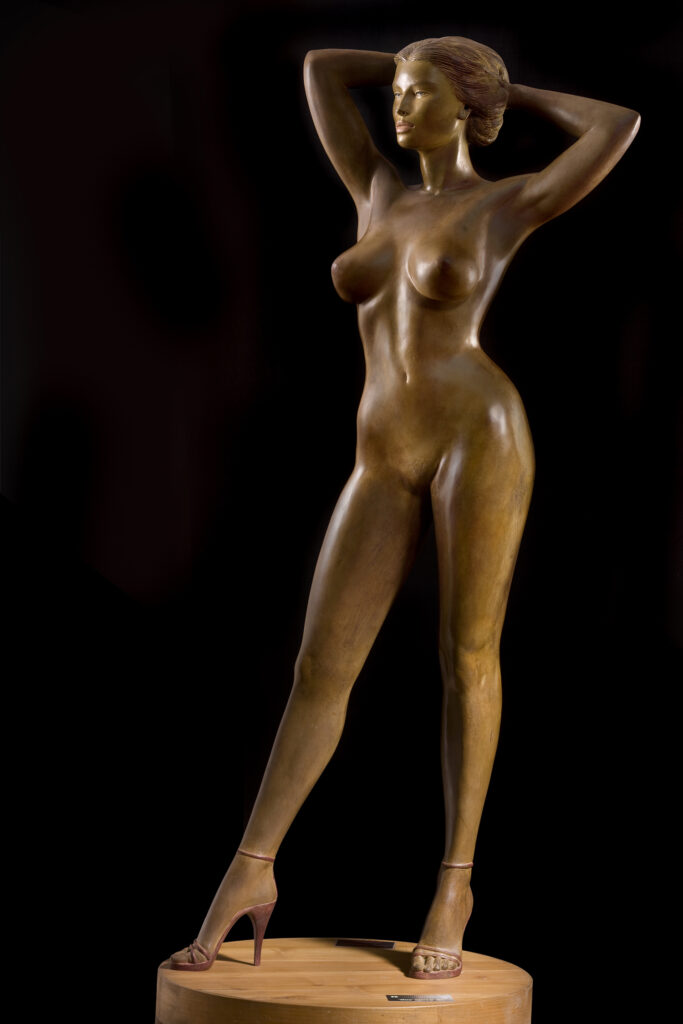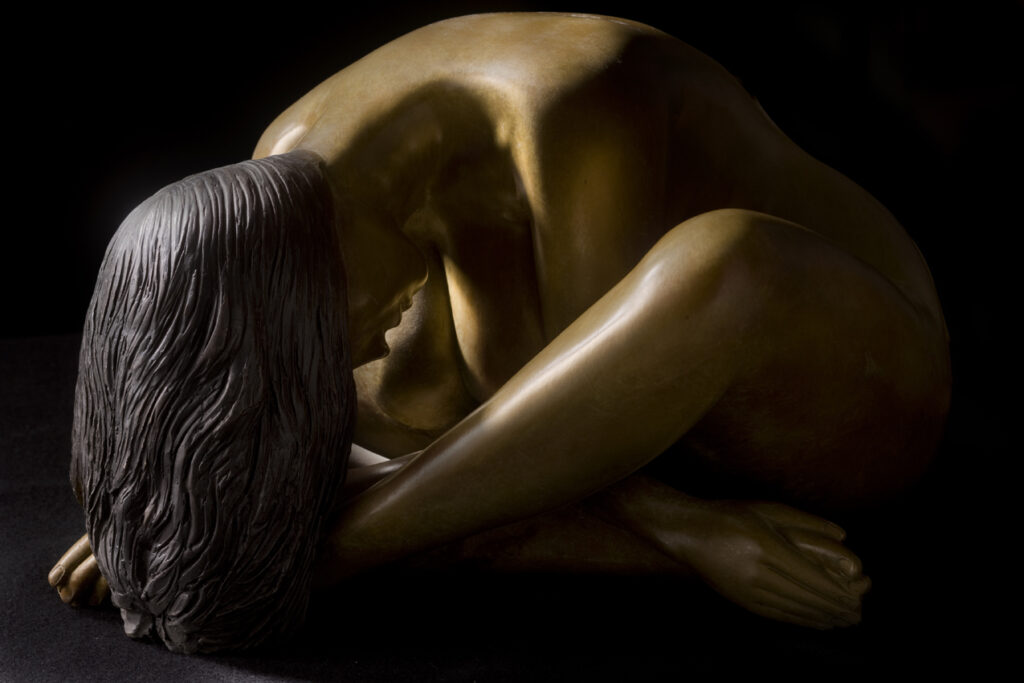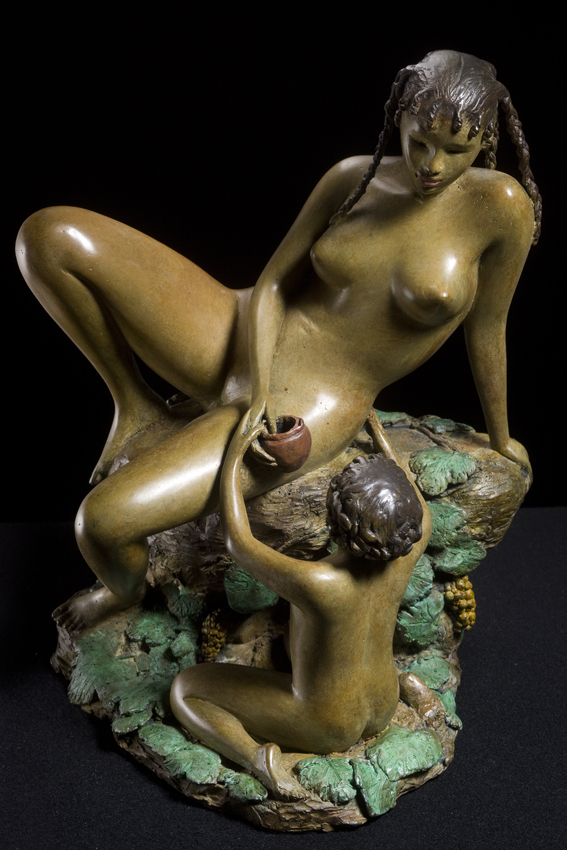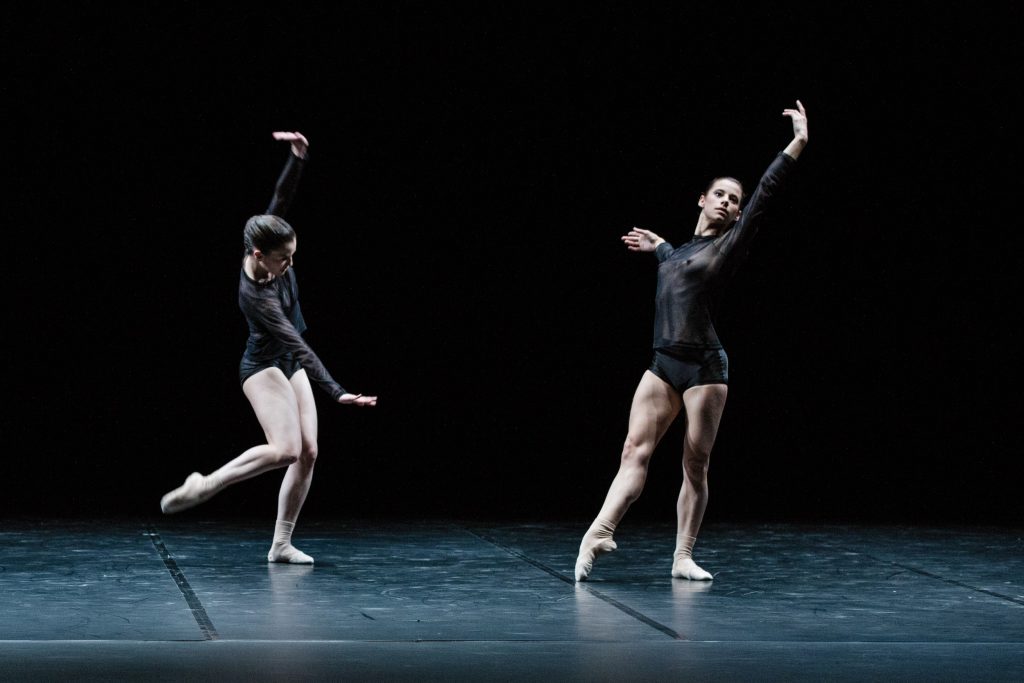What is art? For many it is simple imitation of reality, for others it is the fruit of simple creativity; for us, who observe Valerio de Marchi‘s works, it is this and much more.
Through his sculptures, Valerius not only makes us spectators of his skill in shaping matter and giving form to his thoughts, but also participates in a perfection that surpasses reality by placing itself in ideality. In De Marchi’s production, reality and idea come together: the real subject is femininity and woman is that body which, through her movements, her lines, and her plasticity, embodies it in an absolute way.

A hymn to Femininity: the Miss is the image of a strong, proud, nonchalant woman. Aware of her own beauty, she shows herself to the spectator in a cheeky manner. Her long hair, not tied up but gathered in her hands, conveys a sense of softness, lightness and naturalness. The breasts, a symbol of maternity and fertility, are casually displayed by the woman who, through the position of her arms, lets the spectator concentrate on the soft and sinuous shapes that make it up. The red heels, emblems of passion and eroticism, frame her feet, lifting her – if only slightly – from the ground.
Suspended from reality, she symbolically attains the ideal. In doing so, she strips herself of her physicality while remaining sensual line and feminine form. Sculpted by light, The Miss is an expression of ethereal and immutable beauty.
The curved back, the bowed head, the crossed legs: the entangled position of the body becomes a prison for the woman’s soul. The face and intimacies remain concealed: identity is absent, and the body emptied of its soul collapses in on itself. In this way, the spectator enjoys the aesthetic beauty of this Nymph, disinterested in tracing the feelings, emotions and passions that animate her.

Here is the emblem of a woman who is a prisoner of an image that has been constructed on her for centuries: pure corporeity. The absence of interest, and the inability of most to investigate her interiority, is what has over time led women to be considered mere objects of exhibition.
In Nymph with Putto we witness a moment of utmost intimacy between two subjects. While she is lying relaxed on the rock, he, with a loving gaze, touches her fingers. The exchange of glances and the bowl is a metaphor for a deeper exchange: that of life.

The woman, symbol of motherhood and fertility, sits with the Putto on a lush carpet: the vine full of clusters alludes to love, peace and prosperity. Once again the reflected light elevates the bodies from the materiality of the rock on which they sit, stripping them of their physicality. In this sense the two subjects become the vehicle for an exchange of love, intimacy and complicity that lulls and animates those who witness the scene.
De Marchi’s skill in shaping matter by giving it plasticity and sensuality is what makes his works Ideal. Indeed, they are emblems of classical beauty, such that they remain unchanged over time, always strong and capable of infusing the beholder with fascination and awe. The perfection of lines and forms represents the ideal combination for the origin of a woman who is aware of herself and capable of making her body an instrument of affirmation.




